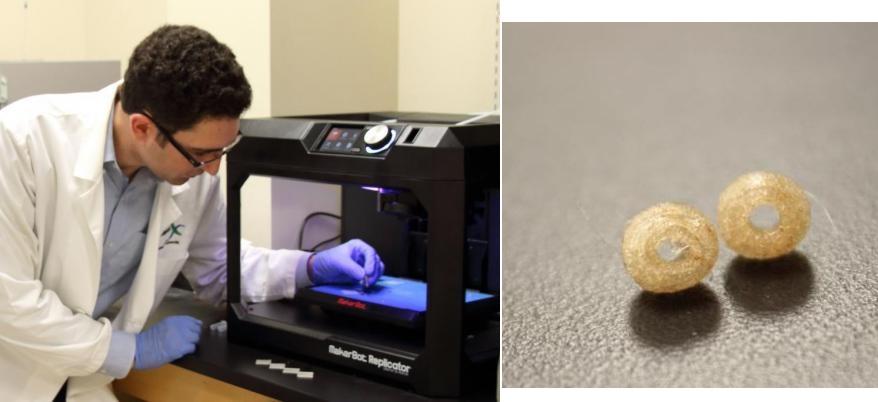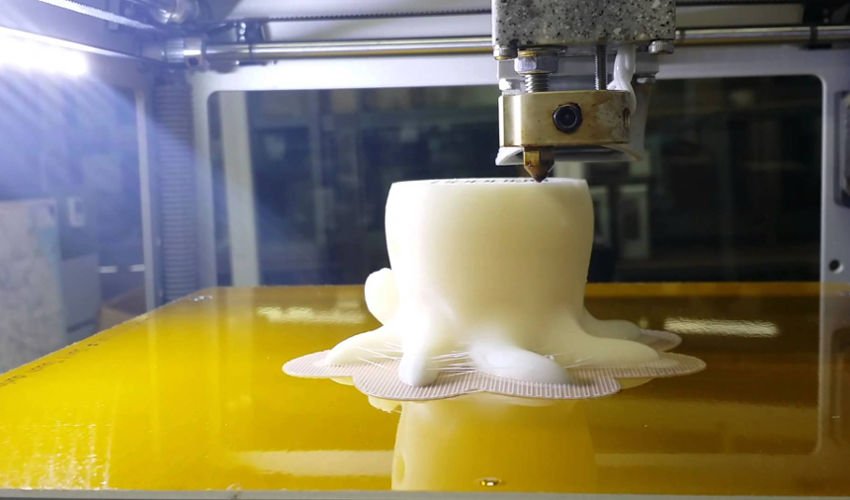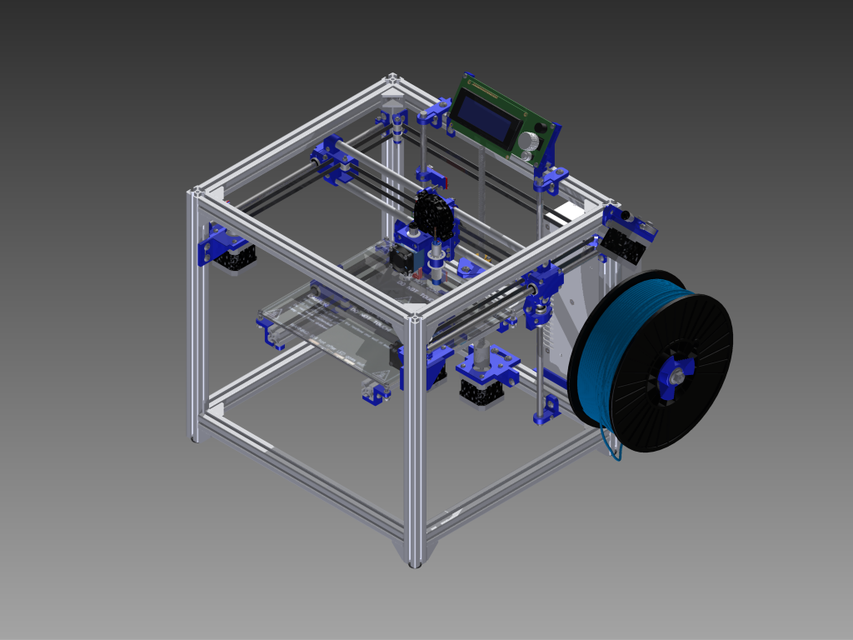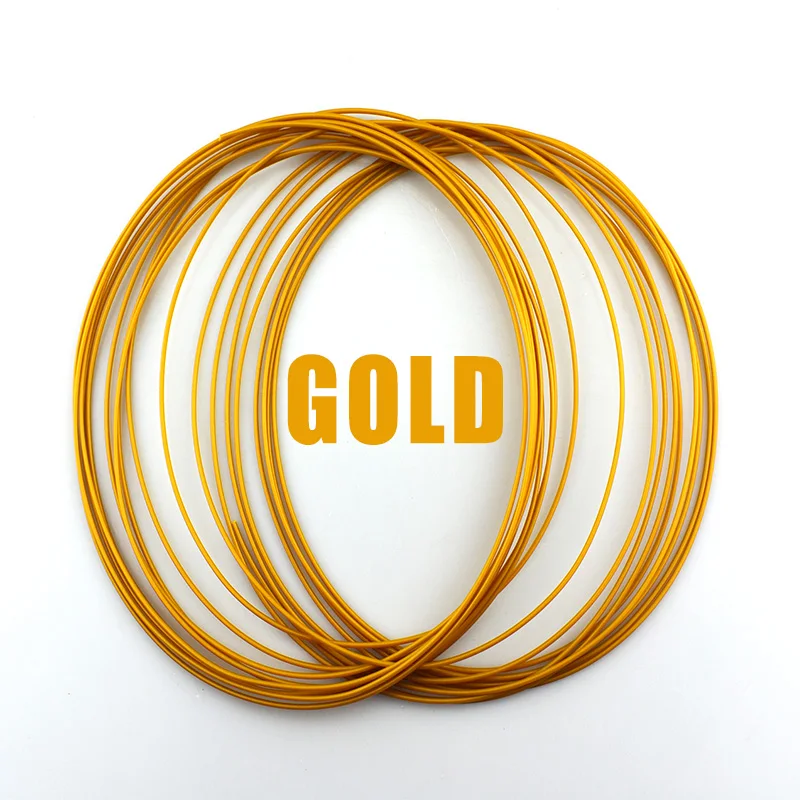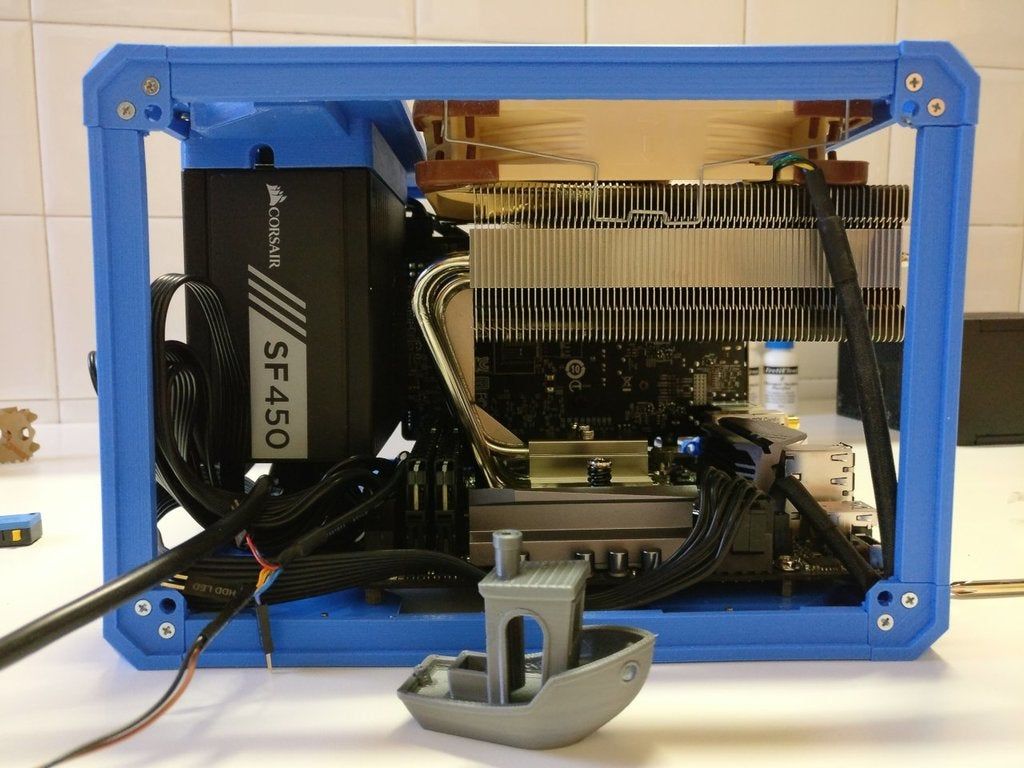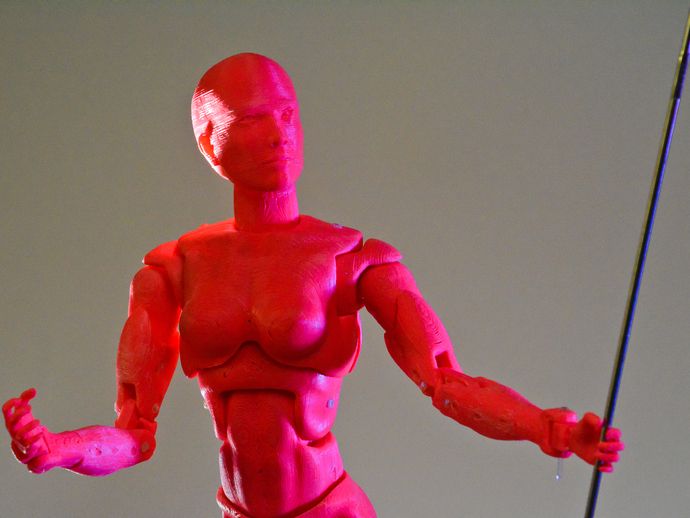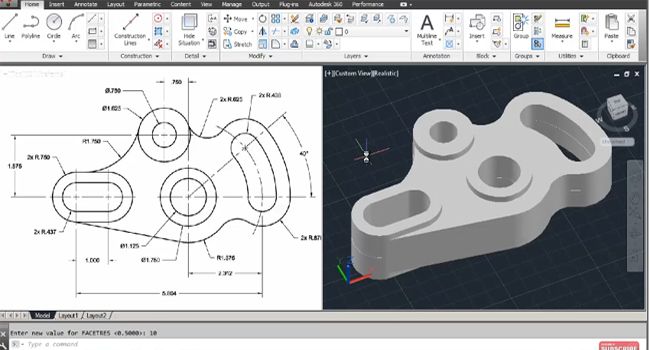3D printer hospital
3D Printing for Hospitals
3D PRINTING FOR HOSPITALS
Your medical facility has to be ready for anything. Formlabs 3D printing helps you provide on-demand, customized care through more effective workflows, patient-matched surgical tools, and visual aids for diagnosis and education, so the clinical innovators on the front lines can provide quick solutions to even the most unconventional problems.
Talk to a Medical 3D Printing Expert
The most creative, versatile doctors are the ones who change the world, one patient at a time. Formlabs offers an end-to-end 3D printing solution for any anatomy that comes in the door, with a wide variety of materials and applications available on a single 3D printer, the Form 3B. Our technology has been validated in FDA-cleared workflows and we develop and manufacture our own materials.
Conduit bypass models, coronary fistulas, RVOT, VSD, ASD, DORV, LAA, hypoplastic hearts
Heart model printed in Elastic Resin by Formlabs.
Skull- and brain-based (glioma) tumors, cerebral aneurysms, and neurotrauma
Clear Resin brain with tumor model. Painted by UPMC.
Foot and ankle, shoulder, hand, hip, lower limb, scoliosis, pediatric, and trauma cases
Hand model in White & Elastic Resins by Formlabs.
Orbital tumors, neurological and maxillofacial trauma, orbital floor reconstructions, mandibular reconstructions
Mandible model in Clear Resin by Mayo Clinic.
Prostate, renal, and brain cancers, bone and soft tissue neoplasm, and pediatric tumors
Kidney model in Clear Resin and painted by UPMC.
Congenital heart disease, cleft palate, scoliosis, and vascular malformations
Pediatric spine model in White Resin by UPMC.
Formlabs brings digital fabrication in-house so you can take action right away. Because our 3D printers integrate seamlessly with the tools you’re already using, it’s easy to get in on the next wave of medical 3D printing and help set the standard of care now.
step 1
Scan the patient’s anatomy
Collect unique patient data via CT or MRI scan, depending on the tissue, to obtain a DICOM file.
step 2
Segment the digital image
Turn your scan into a 3D printable model. Review the case, segment the digital image, and export an STL or OBJ file of the anatomical part.
step 3
Print your model
Upload your file to our intuitive print preparation software, PreForm, set up your print in a single click, and send it to the Form 3B. Produce high-quality parts without any specialized training.
Explore healthcare materialsTry PreForm Software
step 4
Post-processing, simplified
Stereolithography 3D prints require support removal, rinsing, and post-curing. We’ve made every step of the process as easy as possible, with light-touch supports and our automated post-processing system, Form Wash and Form Cure.
Explore Form Wash and Form Cure
step 5
Sterilize for use
Many Formlabs materials are sterilizable, including our biocompatible materials. Follow the guidelines for your material and equipment to sterilize your final part.
Follow the guidelines for your material and equipment to sterilize your final part.
Sterilization data
David Zopf, MD, MS, Assistant Professor, Michigan Medicine
Print patient-specific parts on-site and on-demand and be part of the next wave of dynamic, tactile medicine. Our intuitive, affordable stereolithography 3D printers are optimized for biocompatible, sterilizable materials. Talk to our sales team or download the information sheet below for more information on the Form 3B desktop 3D printer and the Form 3BL large format 3D printer.
Talk to a Medical 3D Printing Expert
Explore healthcare materials
Medical 3D Printing Education
The Formlabs Clinical Innovators Series is a collection of our interviews with some of our best and brightest users sharing their unique use cases with medical 3D printing. See what industry experts are currently doing with their Formlabs 3D printers in hospitals, research labs, and medical device manufacturing firms.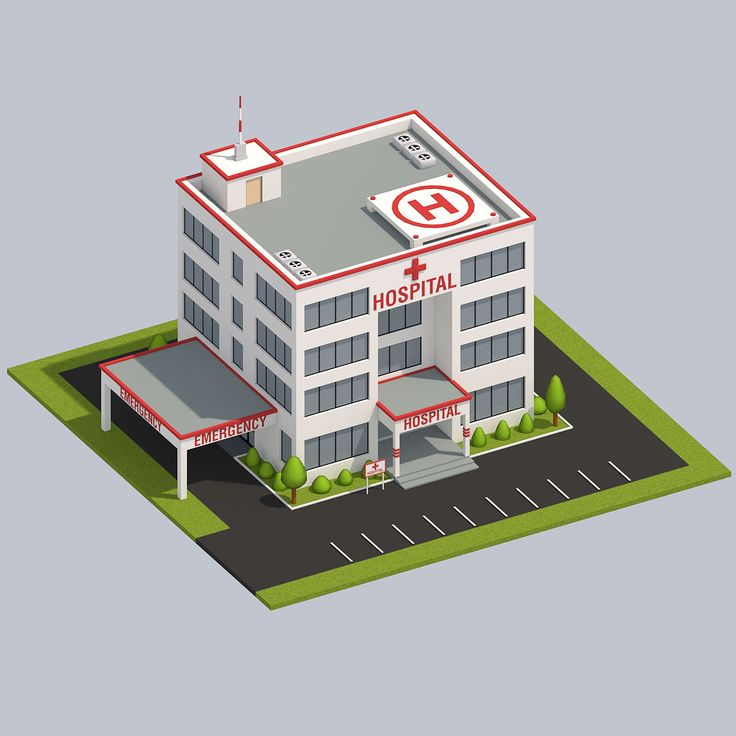 The series is comprised of articles, webinars, and documentation created by Formlabs and our users.
The series is comprised of articles, webinars, and documentation created by Formlabs and our users.
See More
Skull model provided by Institute for Reconstructive Sciences in Medicine (iRSM).
Formlabs is an industry-leading provider of 3D printers and materials that are used by healthcare providers to support the practice of medicine. Please consider local regulations, material data sheets, PHI, and institutional requirements before 3D printing and/or using anatomical models.
Contributed: Top 8 healthcare uses for 3D printing
New technology developments have enabled healthcare advances in 3D printing with an estimated $6.08 billion by 2027 in terms of software, hardware, services and materials. The technology has given a boost to customized medicine, allowing a more accurate understanding of patient symptoms and treatment, and generating increased efficiency in the operating room (OR). Advent of 3D printing technology is leaving its mark in specialties such as orthopedics, pediatrics, radiology and oncology, as well as in cardiothoracic and vascular surgery.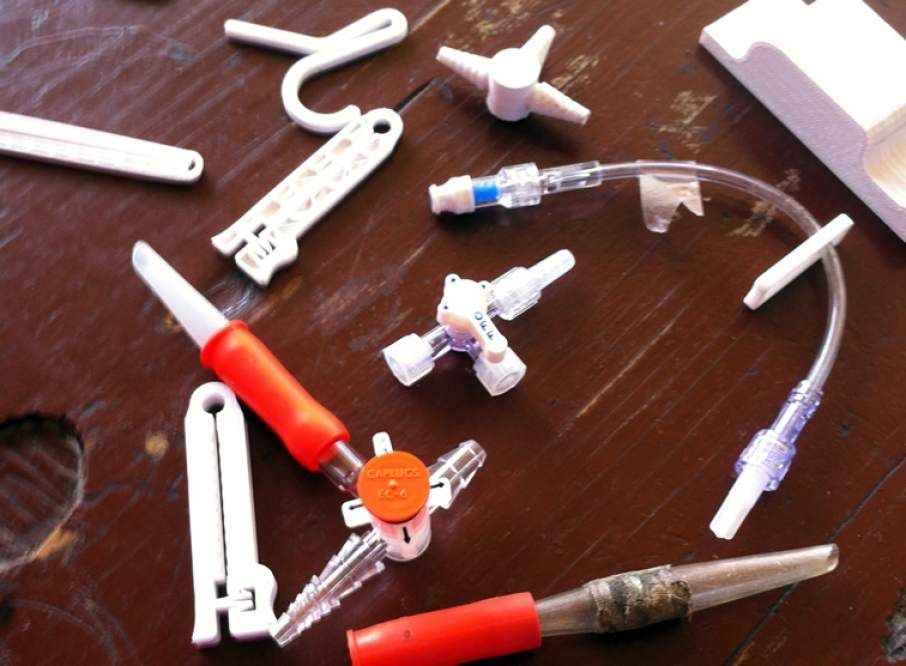
Doctors, hospitals and researchers around the world are using 3D printing for:
- preoperative planning and customized surgery.
- medical devices and surgical instruments.
- molds, prostheses and customizable implants.
- 3D digital dentistry and drug administration.
3D printing allows specialists to create reference models using MRI scans and CT in order to help surgeons prepare better for surgeries.
In 2016, a child in Northern Ireland had two unhealed bones injuries his forearm. The child could not rotate his arm more than 50% and was suffering from increased pain. CT scanning and X-rays showed deformed bones, and the treatment required an osteotomy – a four-hour invasive surgery in which the surgeon reshapes the bones to improve rotation. However, the surgeon, printed a 3D model that changed the diagnosis, the surgical intervention and the recovery of the patient:
- It was the tight structures between the bones and not the shape of the bones that limited the child’s rotation ability.

- The procedure was completed in less than 30 minutes, instead of four hours.
- The patient was able to gain 90% arm-range movement four weeks after the intervention.
- The recovery time, the post-operation pain and the scarring decreased considerably.
Such 3D printing is changing preoperative planning which translates into less time spent in the OR, better surgery outcomes for the patients, faster post-op recovery and lower costs for hospitals.
2. Customized surgeryDue to decreased costs of 3D printers and increased availability of CAD/CAM medical software, more hospitals are creating in-house 3D-printed anatomical models. The process entails several steps:
- MRI and CT scans are processed in a stage known as segmentation.
- Each organ and body part type is modeled.
- Models are translated into STL file formats, arranged for printing and sent to the 3D printer.
Rady Children’s Hospital created its own 3D Innovations Laboratory for printing 3D models, including models that mimic human tissue such as airways, hearts and bones.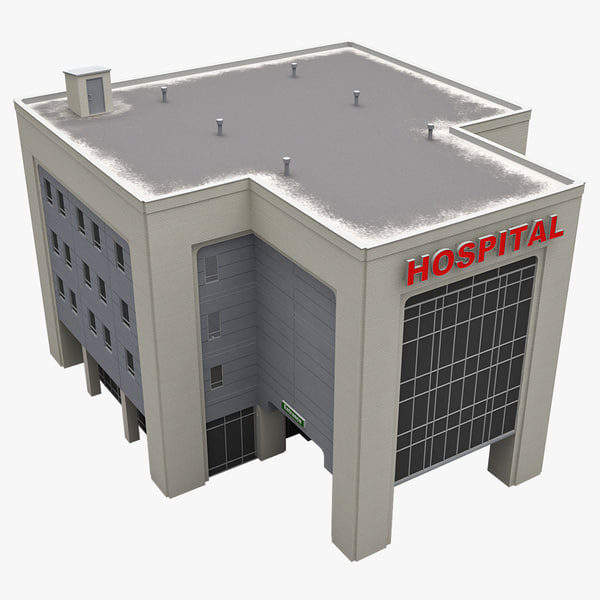 In 2019, the hospital admitted a 7-year-old child born with a single functional heart ventricle (instead of the normal two). The medical team created a 3D-printed model that detailed every vein, artery and valve of the child’s heart, which enabled surgeons to identify the location where blood flow needed rerouting.
In 2019, the hospital admitted a 7-year-old child born with a single functional heart ventricle (instead of the normal two). The medical team created a 3D-printed model that detailed every vein, artery and valve of the child’s heart, which enabled surgeons to identify the location where blood flow needed rerouting.
Anatomical models that are 3D-printed enable surgeons to plan the operation efficiently and establish better treatment solutions, decrease the operation's duration, and improve research and training for medical students.
3. Designing medical devicesIn order to serve their purpose, medical devices must meet several requirements:
- They need to comprise the perfect balance in terms of size and weight.
- The must match the particular shapes of the human body.
- They have to be functional, and they have to pass specific endurance tests.
Producing medical device to meet these criteria traditionally required extensive time.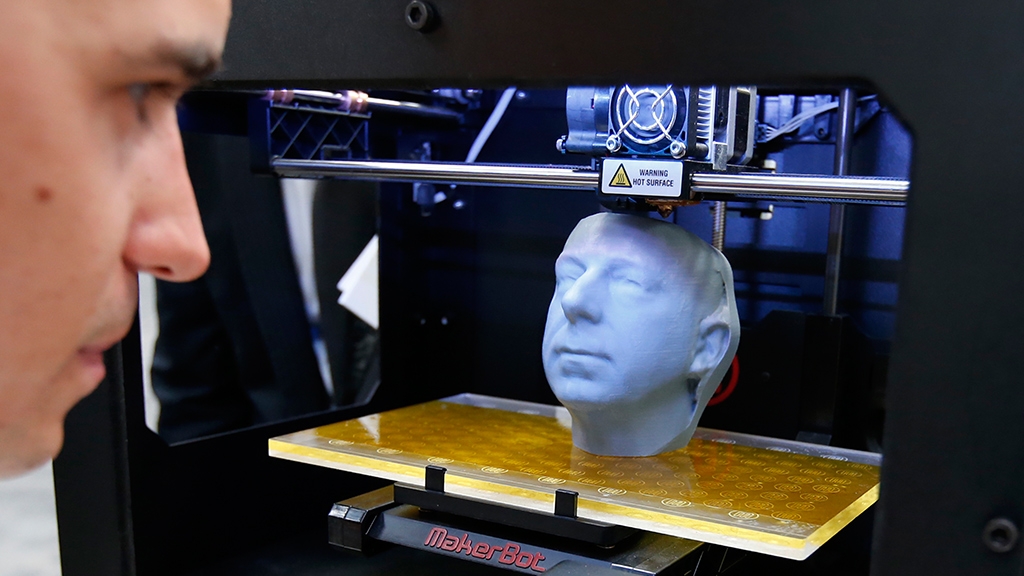 The alternative found by medical device manufacturers was stereolithography – a process in which a moving laser beam controlled by computer builds the required structure layer by layer. Thus 3D printing has been used to create the prototype of an inhaler, including the needed fixtures and jigs, aiming to:
The alternative found by medical device manufacturers was stereolithography – a process in which a moving laser beam controlled by computer builds the required structure layer by layer. Thus 3D printing has been used to create the prototype of an inhaler, including the needed fixtures and jigs, aiming to:
- Reduce production from one to two weeks to one to two days.
- Reduce cost 90% (from £250 to £11 or $343 to $15).
Customized 3D-printed surgical instruments such as scalpel handles, forceps or clamps help surgeons perform better in the OR, reduce operating time and promote better surgical outcomes for the patients.
Manufactured from materials such as stainless steel, nylon, titanium alloys or nickel, customized surgical instruments are well suited for sterilization. Endocon GmbH – a German medical device producer – has used metal 3D printing to create an alternative surgical tool for hip cup removal.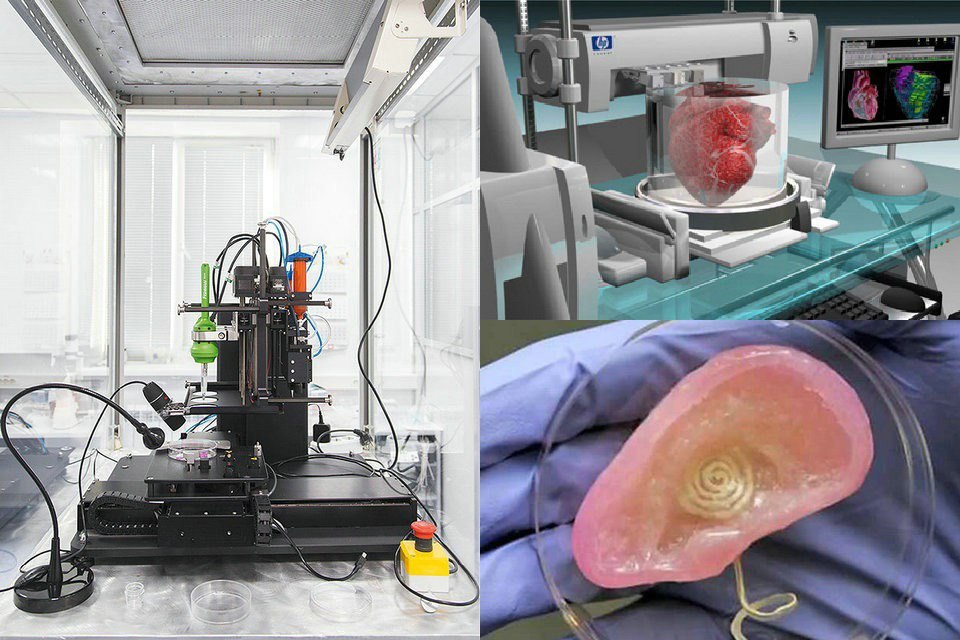 This is traditionally a 30-minute procedure performed with a chisel, but the chisel can sometimes damage the tissue and bones, which results in an uneven surface, making the insertion of a new hip implant difficult.
This is traditionally a 30-minute procedure performed with a chisel, but the chisel can sometimes damage the tissue and bones, which results in an uneven surface, making the insertion of a new hip implant difficult.
Endocon’s stainless steel alloy 3D-printed blades, called endoCupcut, enabled precise cutting along the acetabular cup in three minutes and decreased the rejection rate for the replacement, while reducing production time and cost.
5. Creating prosthesesWhile simple prostheses are available in predefined sizes, customized bionic prostheses cost thousands of dollars. This situation affects many children who outgrow their prostheses and need customized replacement parts, which are produced by a handful of manufacturers.
In 2016, Lyman Connor and Eduardo Salcedo created the Lyman’s Mano-matic prosthesis to provide bionic prosthetics to those who need them and cannot afford them. Globally, prostheses designers can use 3D printing to overcome the financial obstacles and time line constraints entailed by this process. The costs of this manufacturing method are significantly lower than traditional methods, and the prostheses are ready in approximately two weeks, making 3D printing a viable solution for customized bionic devices that replicate a human limb's motions and grips.
The costs of this manufacturing method are significantly lower than traditional methods, and the prostheses are ready in approximately two weeks, making 3D printing a viable solution for customized bionic devices that replicate a human limb's motions and grips.
Metal 3D printing enables medical devices designers to produce implants that perform better, match better and last longer, for knees, spine, skull or hips.
Electron Beam Melting (EBM) is a technology that melts a metal powder layer by layer with the help of an electron beam, thus generating high-accuracy parts. These orthopedic implants provide spongy structures that mimic regular bone tissue, resulting in a higher percentage of osseointegration – the in-growth of a bone into a metal implant.
In 2016, a patient suffering from a tumor that eroded five of his vertebrae was admitted to Peking University Third Hospital. The tumor, caused by a rare form of malignant chordoma, could be removed only through surgery. However, the healing of the extended size bones defects might not have been completely and correctly possible once the lesion would have been removed.
However, the healing of the extended size bones defects might not have been completely and correctly possible once the lesion would have been removed.
To address this challenge, researchers designed five artificial vertebrae similar to the body structure of the patient using EBM technology. The prosthesis enabled increased stability of the spine, reducing pain and increasing the durability of the device, which allowed the patient to walk without braces two months after the surgical intervention.
Customized 3D printed implants represent a flexible solution for difficult orthopedic cases and may generate more treatment opportunities in the future.
7. 3D Digital DentistryA recent report indicates that, by 2022, cumulative manufacturing will produce around 500 million dentistry devices and restorations every year, with an estimated $9 billion for the entire dental segment by 2028.
In the dental industry, 3D printing is used for the manufacturing of dentures, surgical guides, bridge models and, most of all, for clear aligners – invisible devices that straighten teeth.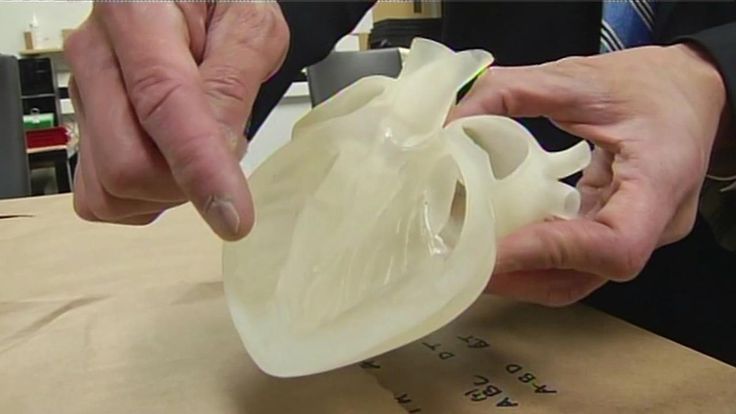
Compared to metal braces, clear aligners are actually invisible and can be taken off when the wearers need to brush their teeth or eat. The traditional production method of clear aligners is a combination of manual and milling processes that requires time and effort. The 3D printing technique speeds up the process, since customized molds for clear aligners can be manufactured directly from digital scans of patients.
Looking for cost-efficient solutions, one dental start-up has perfected an easy process to produce molds for clear aligners:
- Customers take impressions of their teeth with an at-home impression kit or an intraoral scan at a specialized center.
- Impressions and scans are checked by a dental professional, who creates a plan for treatment.
- The company then sends the 3D-printed aligners to the customers.
Therefore 3D printing is a cost-effective method to produce clear aligners, since the setup and tools are not expensive, and their customization is, as proven, direct and simple.
3D printing can also simplify drug administration with the help of 3D-printed pills. Polypill is a concept designed for patients suffering from several affections, containing five different drugs compartments and two separate release profiles.
Patients affected by several health issues often take their medication at different hours within the day, and this can be confusing in setting a schedule. This 3D printed pill handles both medication dosage and potential interactions between drugs treating different conditions, so eliminating the need for this scheduling and close monitoring.
The administration of a single customized pill to treat several ailments has multiple advantages:
- increased medication adherence to prescribed treatments.
- customized medication or drug combinations.
- lower production costs, due to the ability to treat more affections at the same time.
- greater accessibility in developing countries to affordable and efficient drugs.

As the price of high-performance 3D printers decreases, more medical professionals use 3D printing to produce cost-efficient customized devices in short periods of time, to design patient-tailored anatomical models, to identify revolutionizing clinical solutions and to create new treatments adapted to patients’ needs.
The advances in 3D-printing technology will attract more customized care and more high-precision medical instruments. At the same time, 3D printing is expected to make an impact in other medical specialties such as ophthalmology, regenerative medicine and bio-printing.
About the Author
Dr. Liz Kwo a serial healthcare entrepreneur, physician and Harvard Medical School faculty lecturer. She received an MD from Harvard Medical School, an MBA from Harvard Business School and an MPH from the Harvard T.H. Chan School of Public Health.
Children's Hospital SJD Barcelona prints anatomical models for planning and modeling complex surgeries
Regardless of the severity of any operation, each of them comes with its own risks and rules. At SJD Barcelona Children's Hospital, a private non-profit children's hospital, 3D printing is helping to meet the needs of the population in pediatrics and maternity, with about 200 operations per year. BCN3D visited a team of surgeons, engineers and others to discuss a specific case where a cancer biomodel was used for 3D planning and surgery, and learned about the full process from the radiologist's first impressions to the patient's own outcome of the surgery. nine0005
Admission to SJD Barcelona Children's Hospital
Ranked 3rd most active in Europe and 1st most active in paediatrics in Spain, SJD Barcelona Children's Hospital is doubling its functions as a university hospital through research, innovation and education. Animal-themed corridors, interactive elements and live music throughout the appointment are all designed to make patients feel as calm as possible.
Exponential development of 3D printing
3D planning and printing appeared in the hospital in 2013 after Dr. Lucas Crauel specifically requested a biomodel to complement the planning of a complex cancer case. Since then, the use of this technology has expanded exponentially, leading to the creation of a multidisciplinary team.
"We currently have over 200 3D printed operations planned and 9 - Arnau Valls, Innovation Engineer and Technical Manager, 3D Printing at SJD Barcelona Children's Hospital.
In 2016, thanks to the work of radiologists, surgeons, SJD Barcelona Children's Hospital 3DForHealth (3D4H) officially launched its 3D planning, virtual modeling and 3D printed anatomical models and cutting and positioning guides required for complex surgeries and custom implants to meet the needs of all pediatric specialties.Its activities cover a wide base of education, research projects for the creation of new devices, the development of simulators for specific needs, and much more. This 3D device is the first in Spain to receive the commendation of the Generalitat of Catalonia for quality own print. nine0005
This 3D device is the first in Spain to receive the commendation of the Generalitat of Catalonia for quality own print. nine0005
Case pending
The patient has already undergone surgery to remove his left eye. Due to the predisposition to the development of other tumors and despite a course of radiation and chemotherapy for 3 months, the tumor remained centered in the right maxillary bone. Because chemotherapy is not as effective for these tumors, a complete resection was necessary.
Of course, in a complex operation like this, there are a number of key factors to consider. First, the affected area was the face, certainly an important part of the patient's personality. Secondly, it is a growing child; the team had to take into account subsequent stages of skeletal growth. Finally, the fact that the patient had lost an eye on the left side meant that the preservation of the right eye and vision was essential. nine0005
The path to resection
As a result of the collective collaboration of all specialties, especially oncology and maxillofacial surgery, the process began with the use of imaging techniques (CT and MRI) by radiologists to conduct tests both for the best diagnosis and to determine optimal protocols .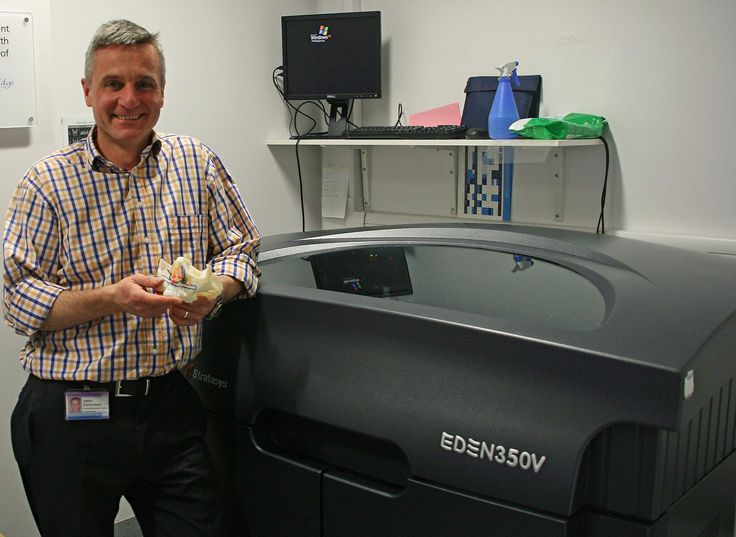 The results obtained were then summarized along with pre-existing information about this type of tumor. This stage is not only crucial for assessing and predicting the case, but also plays a role in planning the aesthetic side of the case. nine0005
The results obtained were then summarized along with pre-existing information about this type of tumor. This stage is not only crucial for assessing and predicting the case, but also plays a role in planning the aesthetic side of the case. nine0005
Next, a team of radiologists, surgeons, and 3D printing engineers got together to decide which aspects to print, create select segmentations in the CAD file, and begin 3D planning and modeling. Here the group decided that the best thing to do would be to print different parts of the skull and the tumor itself. Prototype titanium plates were also printed to be inserted.
ABS material from BASF was chosen to reproduce the color and anatomy of the bones. Such biomodels serve as visual aids, depicting the anatomical relationships between the tumor and regions of the skull. The SJD team selected BCN3D printers for realistic print results that are the best value for money. nine0005
3D model data allows doctors to check if the implants will fit the patient. Acting as a means of strict quality control, they can also simulate the operation itself, define incision boundaries for the operation, and work out the incisions that need to be made.
Acting as a means of strict quality control, they can also simulate the operation itself, define incision boundaries for the operation, and work out the incisions that need to be made.
On the day of the operation itself, the images and the physical biomodels themselves are at arm's length for review. Having such a planned outcome gives physicians a starting point to work with and adds confidence. nine0005
"3D printing has helped us avoid possible post-operative interventions and improved quality for both the patient and the surgical process" . - Dr. Adaya Valls, Maxillofacial Surgeon at SJD Barcelona Children's Hospital.
"The truth is that it was a bit difficult in the beginning because it involved the face itself. We doubted if there would be many scars... but the operation went really well and the scars were minimal. From here we keep moving go ahead and follow the marked protocol" . - Clover, the patient's father.
The smooth running of this operation and the reflection of the patient's own experience is the merit of the SJD hospital team. 3D printing is a key player in advancing medical models that are becoming more and more accurate; The 3DForHealth Lab, using a combination of new technologies, will begin to improve the creation of guidance and positioning tools for patients and surgeons. In addition, the team aims to better mimic living tissues by exploring mechanical properties, colors and textures. Another area of development is bioprinting, where printed models act as a solution directly to the patient, and 3D printed pharmaceutical products can be personalized. Every day it becomes more and more clear that 3D printing has and will continue to influence the way we approach medicine. nine0005
3D printing is a key player in advancing medical models that are becoming more and more accurate; The 3DForHealth Lab, using a combination of new technologies, will begin to improve the creation of guidance and positioning tools for patients and surgeons. In addition, the team aims to better mimic living tissues by exploring mechanical properties, colors and textures. Another area of development is bioprinting, where printed models act as a solution directly to the patient, and 3D printed pharmaceutical products can be personalized. Every day it becomes more and more clear that 3D printing has and will continue to influence the way we approach medicine. nine0005
We will keep you updated with the latest news!
Your team IGO3D Russia :)
Our groups on social networks:
Telegram
VkontakteYouTube
in the Italian hospital for respirates for respirates for 3D-gamut
Source: 3D Printing Media Network
An Italian hospital is 3D printing spare valves for respirators needed to keep patients alive during intensive care. Doctors came to this decision, faced with a shortage of parts due to the outbreak of coronavirus. nine0099
Doctors came to this decision, faced with a shortage of parts due to the outbreak of coronavirus. nine0099
A minute of care from UFO
The world has officially declared a pandemic of COVID-19, a potentially severe acute respiratory infection caused by the SARS-CoV-2 coronavirus (2019-nCoV). There is a lot of information on this topic on Habré - always remember that it can be both reliable / useful, and vice versa.We urge you to be critical of any published information
Official sources
- Website of the Ministry of Health of the Russian Federation
- Website of Rospotrebnadzor
- WHO website (eng)
- WHO website
- Sites and official groups of operational headquarters in the regions
If you do not live in Russia, please refer to similar sites in your country.
Wash your hands, take care of your loved ones, stay at home if possible and work remotely.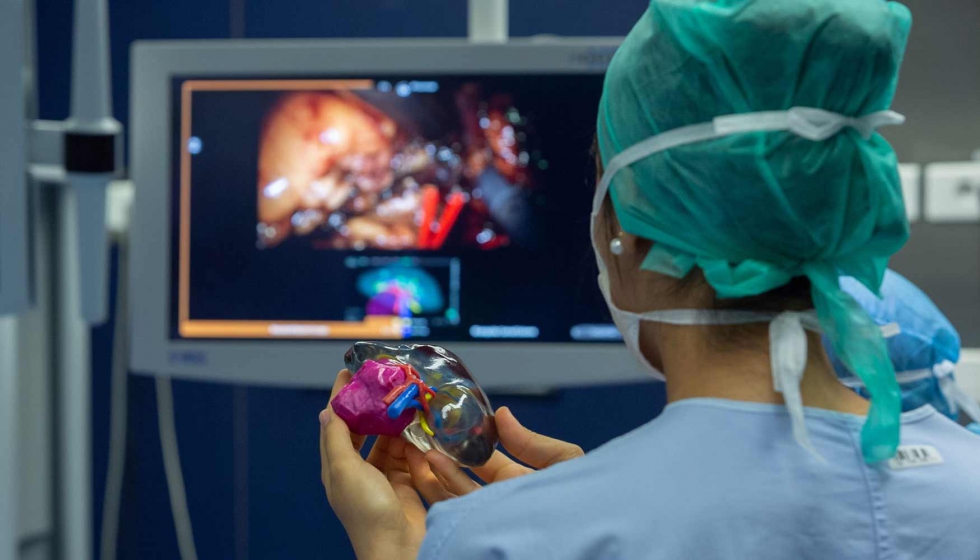
Read publications about: coronavirus | remote work
“One of the biggest problems of the coronavirus pandemic is the huge number of people who need intensive care and who need working respirators. With thousands of patients in hospitals, resources quickly run out and normal conditions suddenly become life-threatening. One Italian hospital found itself in this position: it ran out of valves for a respirator needed to save patients. Additional production could save the situation, ”Hackaday reports. nine0005
As explained by 3D Printing Media Network, the shortage of valves occurred in a hospital in the city of Brescia, which is located near one of the areas most severely affected by the coronavirus infection.
“The valve in question is a plastic piece that must be replaced when the device is used on a new patient to ensure sterility,” explains Hackaday.
Nunzia Vallini, editor of the local newspaper Giornale di Brescia, learned about the shortage.



